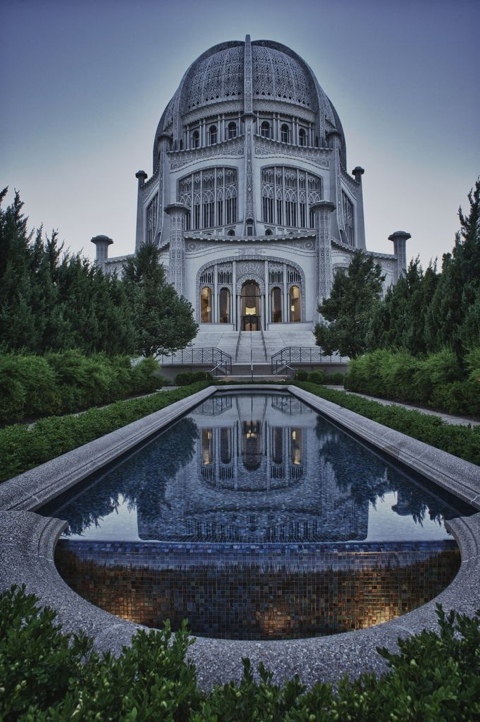Nobody likes a good fight more than a photographer. Almost any topic regarding photography will raise the the hackles of a shutterbugs. Just go tell a Nikon shooter that Canon makes a better system, or suggest to a group of photographers that a real photographer only uses natural light and never crops an image (be prepared to run for cover). Fighting tendencies notwithstanding, for some reason, I am surprised about how up in arms some folks get about HDR photography.
HDR stands for “high dynamic range” and is a technique for producing an image that captures a range of light values in an image wider than would normally be possible in a single image. A series of photographs are shot with only the exposure changed in each one—exposing for the highest highlights at one end of the exposure range and the darkest shadows at the other end. The images are composited using software and the result is an image that shows dark shadows and bright highlights at the same time.
Unlike the eye, the camera is, and has always been, limited to a relatively small dynamic range of exposure. Overcoming that limitation has been one of the fundamental challenges to photographers. It has previously been necessary to decide if you wanted to maintain detail in the highlights or shadows in an image. The ability to overcome that limitation or to exploit it has defined the careers of thousands of photographers since the first light hit emulsion so long ago.
The super incredible human eye can see and process a much wider range of light to dark than a camera can. While HDR images can simulate our eye’s dynamic range, it doesn’t duplicate it. There is something that happens neurologically that interprets what we see in in everyday life in a way that (obviously) makes perfect sense, i.e. It looks “real.” Somehow, the HDR image often seems “unreal” as if the mind can’t recognize a photograph with a wide dynamic range the way it does with real scenes.
Now that we have the ability to create an image with a wider exposure range, it makes sense that that would be the superior photographic technique. But there is something hard to define about a “normal” photo that often makes it seem more comfortable and natural to look at than a HDR photo. Digital photography is still held up to film photography for comparison, with current digital technology arguably meeting or exceeding film quality. “Traditional” digital photography vs. HDR photography could be compared to the visual difference between a movie shot on film and one shot in HD. The movie shot in HD sometimes has a hyperreal look to it that the film doesn’t have. If digital photography has strived to simulate the analogue look of film, then HDR images could be seen as a step backwards in photographic evolution. There is no denying that HDR images can be visually arresting. Perhaps the very fact that they do not look a film image earns them a label of non-photographic. This is, in my opinion, ridiculous.
To claim that HDR images lack merit because they look different or they use a different technique for their creation, can be compared to movements in painting. The realist movement criticized the impressionist movement. Many put realism as a style on a pedestal as beyond reproach. The impressionists’ paintings were brash and unorthodox, appearing to have a lack of skill or control as defined by a desire for a painterly look that imitates reality rather than interpreting it. The impressionist paintings did not appear to be “real” paintings because they were not “realistic.” Similarly, HDR images are often seen as not being “real” photographs. Of course, no photograph is anything more than the photographer’s interpretation of a fractional slice of time captured by the camera. The position and angle of the camera, the choice of lens, aperture and shutter speed, and the decision of when to release the shutter all put the fingerprint of the photographer on the photograph and define the image as an interpretation of reality rather than a copy of reality. The impressionists captured a view of the world unique to each artist that has come to be accepted and celebrated as brilliant in its own right. I have no doubt that HDR photography will one day similarly be seen as an important movement in the history of photography.
I am the first to admit that there is a lot of bad HDR photography being made. But there is certainly a lot more bad “traditional” photography being made at the same time. I think it is important to hang up the boxing gloves on the subject and recognize HDR photography for what it is—a means of self expression for photographers to share their vision with others. Not better, not worse, just different. I mean, it’s not like we are comparing the obviously superior Nikon to Canon.
Just kidding.
Maybe.
P.S. All the images in this post are HDR images.










Mr. Banas! Long time, no read. Hope all is well with you and the fam. I’ll send you an email to catch up.
I was raised on the Pentax K-1000. Loved it. And I try to do anything “in camera” that I can. Thanks for reading!
Crusty old photog says: “HDR is for people who don’t know how to use ND grads.” 😛
Seriously, photography has always been about “tricks” to get a scene to look more or less like what you saw through the viewfinder. When you start with a monocular view of the world, what is there to be “purist” about?
Oh, and there is no difference between Nikon and Canon – they both surrender to Pentax! 😉 Seriously, I bought a K-5 because its AEB does 5 shots +-2 ev apart, which is perfect for my extensive HDRs…